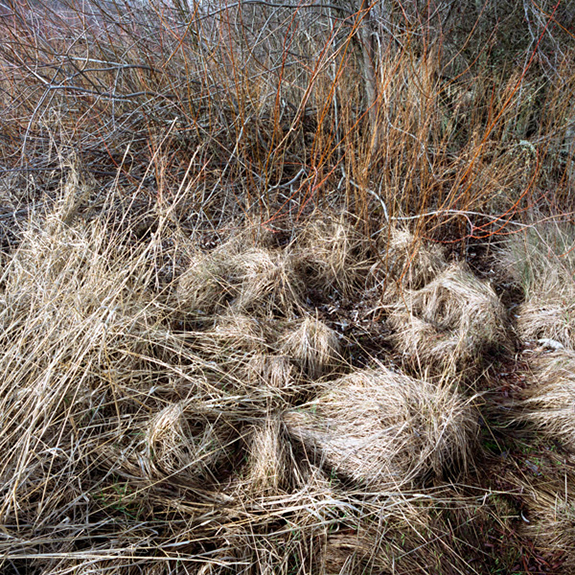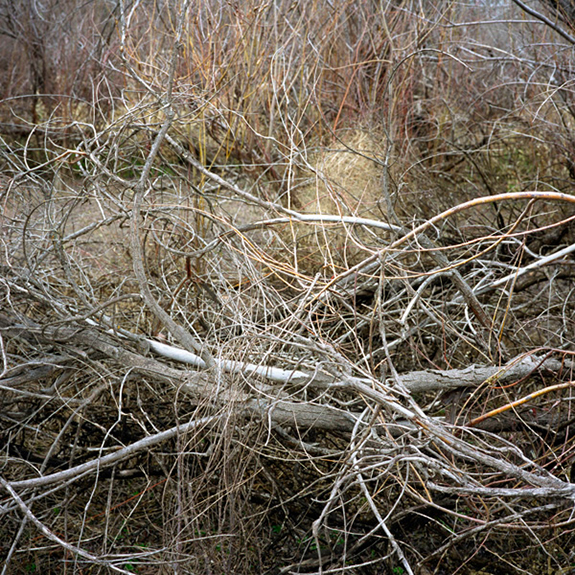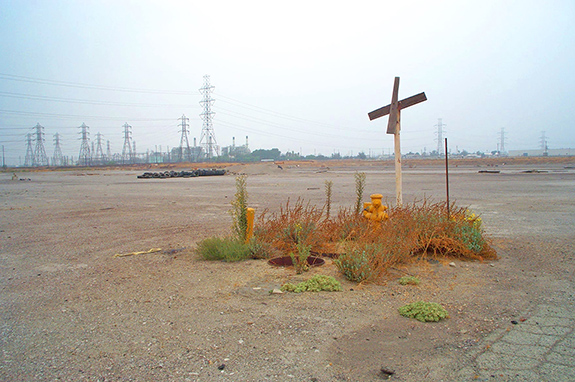
These images are not landscapes in the traditional sense but rather appropriations of the seasonal textures, colors and shapes from a unique locale — Emigrant Lake, Oregon. By squaring these elements within the camera frame, an order is highlighted which weds the local gestalt of a small niche of the landscape with the photographer’s search for a familiar compositional order or in rare instances his discovery of a previously unrecognized or unappreciated natural order.
I think of archetypal psychologist James Hillman’s book The Soul’s Code and his examination of the “innate image” or personal daemon as it informs our unique and individual callings in life.
As I was seeing and taking them, the photos were about design and composition, but from another perspective, were an unfolding theme, a very early chapter of which I remember from my childhood in Holley, New York. For several years, late into the winter season after unseasonably warm weather had melted the snow, I was six or seven and, wearing my grandfather’s fishing boots, would wade through the ankle deep water in an overgrown and untended orchard behind my grandparents’ house, fascinated with little scenarios of tangled branches, mounds of dead wood and sandstone boulders cleared and piled years ago. It is not too different from my experience, in many ways, of taking this series of images of this one particular location, an artificial lake which rises and falls seasonally, gradually, imperceptibly, flooding the riparian areas, creating equivalent (but necessarily different) gestalts to which I respond, when I can see them, by recording their image. Rather than viewing this particular manifestation of a creative process as sequentially related to childhood experience in a cause and effect way, it is personally and creatively more satisfying to consider both in relation to the currents and eddies of my own daemon which calls me to this task of exploration, looking and seeing over the course of a lifetime.
— Jeff Krolick, Ashland, Oregon, USA



